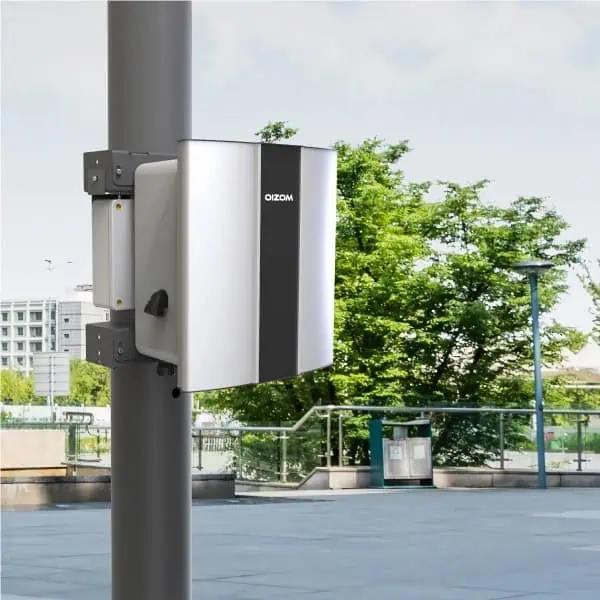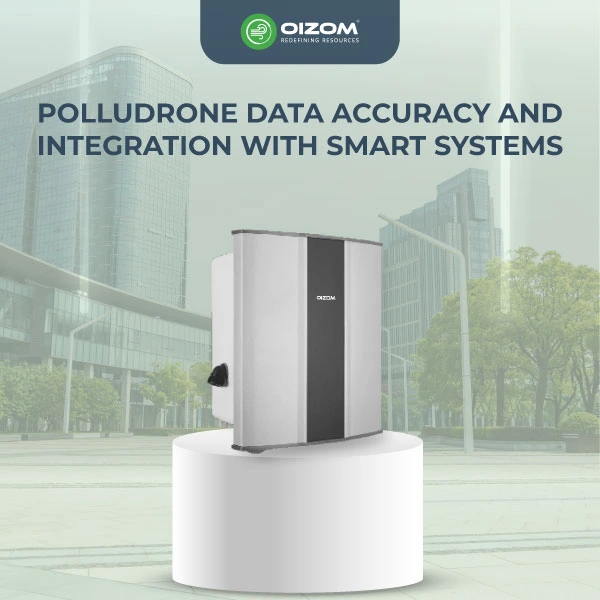Summary of Blog
In this blog, we explored the world of low-cost air quality monitoring and discussed its significance in combating air pollution. From educating communities to pinpointing pollution hotspots, affordable sensors are changing the game. By leveraging these tools, cities, and individuals can gather crucial data to drive cleaner air initiatives. With affordability, ease of deployment, and maintenance on their side, low-cost monitors offer a promising solution for a healthier environment. It’s time to take action and prioritize clean air for all.
What is low-cost air quality monitoring?
Air pollution is a growing public concern worldwide. People are more aware of environmental issues nowadays. You all were thinking, why am I discussing this air pollution concern? However, in the 21st century, knowing whether the air you breathe is good or poor is very important. Let me tell you one fact:
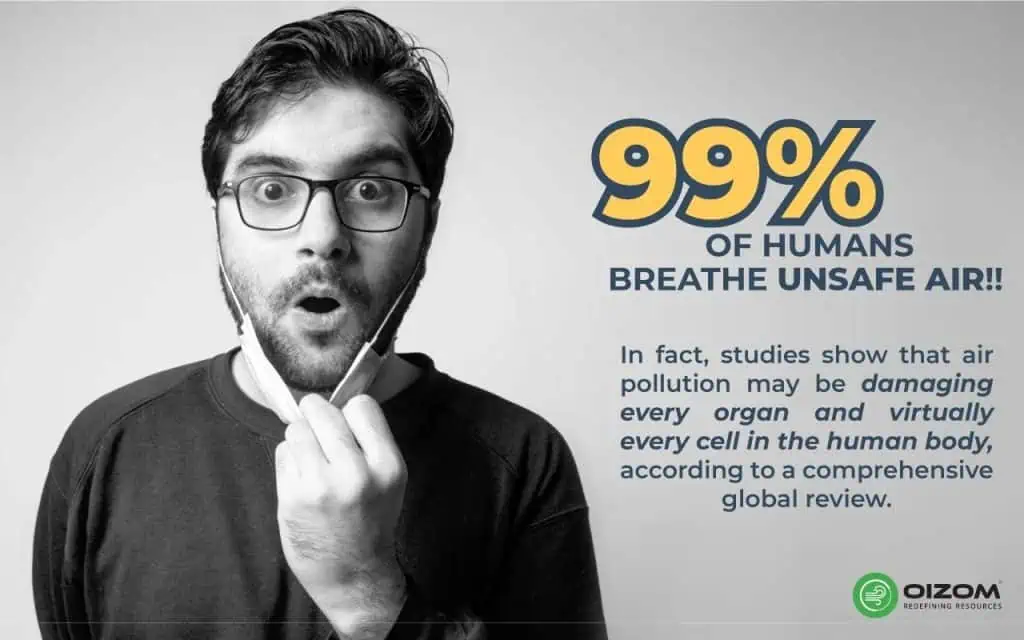
Air quality monitoring is an essential tool in a city’s toolbox for enhancing urban air quality. Reference monitors, sometimes called “regulatory-grade” monitors, provide highly precise but costly data to certain communities. In contrast, there is little to no information on air quality in other cities. However, a recent surge in more reasonably priced monitoring devices has opened up new possibilities for communities of all sizes. Many cities use low-cost air quality monitors to track pollution and create air cleaning strategies. Today, I will take you through the journey of low-cost air quality monitoring and give all the relevant insights.
Working principles of low-cost air quality sensor
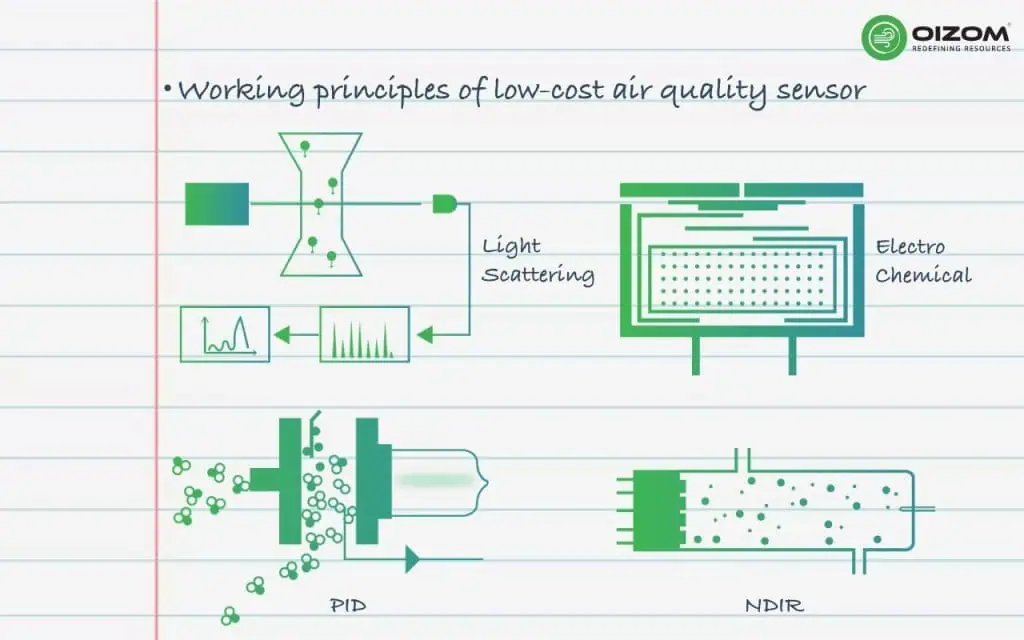
Low-cost air quality sensors measure pollutants in the air using various principles. They are a relatively new and inexpensive technology that assesses particular air pollutants at a significantly lower cost than regular air quality monitors. These pollutants are usually particulate matter and occasionally gaseous pollutants. Many government authorities (EPA, UK Govt., etc.) leverage rapidly evolving technology to provide citizen-focused air quality solutions globally.
Low-cost sensors are optical sensors based on light scattering. When light passes through the detecting area, the light from a laser is scattered by particles in the air. The scattered light is transformed into electrical signals, which are amplified and processed. The number and diameter of particles are then obtained by analysis based on existing relationships between signal waveform and particle diameter. Calibration, proper placement, and regular maintenance are essential to ensure accurate readings from low-cost air quality sensors.
How to set up low-cost air quality monitoring
A low-cost air quality monitoring system requires multiple steps to set up.
First, choose the right sensors, considering your budget and the contaminants you want to monitor. When implementing air quality monitoring for residential areas, as you place the sensors, consider variables such as airflow patterns and their proximity to sources of pollution
- To preserve accuracy, ensure the sensors are calibrated correctly per the manufacturer’s instructions. Connect the sensors to a microcontroller or data logger to gather and process data. Install the required software to view and analyze data in real-time.
- Consider elements such as internet connectivity and power supply for ongoing observation. Place sensors in weatherproof enclosures or attach them firmly to protect them from severe weather and damage.
- To guarantee reliable readings, maintain and inspect the sensors regularly. Lastly, the information gathered should be communicated to those who need it, such as the general public or local government, to encourage action and increase awareness for better air quality.
Air pollution measurement based on low-cost air sensor
Let me tell you one fact: if you are from an environmental background, you might know this, “Time for a knowledge boost!” Low-cost sensors “can achieve 80%–90% accuracy compared to the RGMs (Reference based monitors).”
- Using affordable air sensors to measure air pollution involves setting up basic sensor equipment to monitor different air contaminants. These sensors detect gases like carbon monoxide, nitrogen dioxide, ozone, and particulate matter using various methods, including optical, electrochemical, and metal oxide semiconductors.
- Sensor placement is critical, considering elements such as urban form, wind patterns, and proximity to sources of pollution. Regular maintenance is essential to prevent drift and preserve reliability, and sensor calibration is required to guarantee correct results.
4 types of Low air quality sensor project
There are major 4 types of low-air quality sensor projects, which are discussed below.
General information and education
Affordable air sensors can educate the public and children. The data from these monitors indicate whether a pollutant is present in various settings and at various times. They can also be used to learn about scientific methodology, air pollution, and how to set up and use air monitoring tools. These programs enable people and communities to take proactive measures to lower pollution exposure and support clean air regulations by raising awareness and understanding of air pollution issues.
Personal exposure monitoring
Quantifying the air pollution an individual or group is exposed to using affordable air sensors daily is possible. People wear or carry gadgets for this endeavor while they go about their daily lives. The data from these sensors can be used to compare exposures when working out, walking to courses, driving to work, and inside. These sensors can be used by people to help them make decisions about their own health. Community organizations can use these sensors to calculate exposure levels for people living in environmental justice regions.
Supplementary network monitoring
Low-cost air sensors can enhance network monitoring by covering areas beyond the network’s range. The data can be used to determine whether local pollution levels are comparable to those at the nearest state-operated monitor. Supplementary network monitoring initiatives should maintain an adequate level of quality control. To achieve optimal findings, air quality data should be gathered for at least three months during peak pollution seasons, ideally across a year.
Hotspot identification and characterization
“Unveiling the hidden facts!” In Kinshasa, the capital city of the Democratic Republic of Congo with a population of 11 million people, air quality monitors have only been implemented for the first time recently, demonstrating the large gap between investment in air quality monitoring infrastructure and the need for pollution management.
Low-cost air sensors can detect air pollution hotspots where levels may exceed expectations. These portable sensors can map pollutants and identify emission sources at permanent sites or as mobile systems. The sensor’s proximity to the source is crucial for detecting high pollution concentrations. Hotspot monitoring projects should meet some acceptable level of quality control.
Advantages of low air quality monitoring
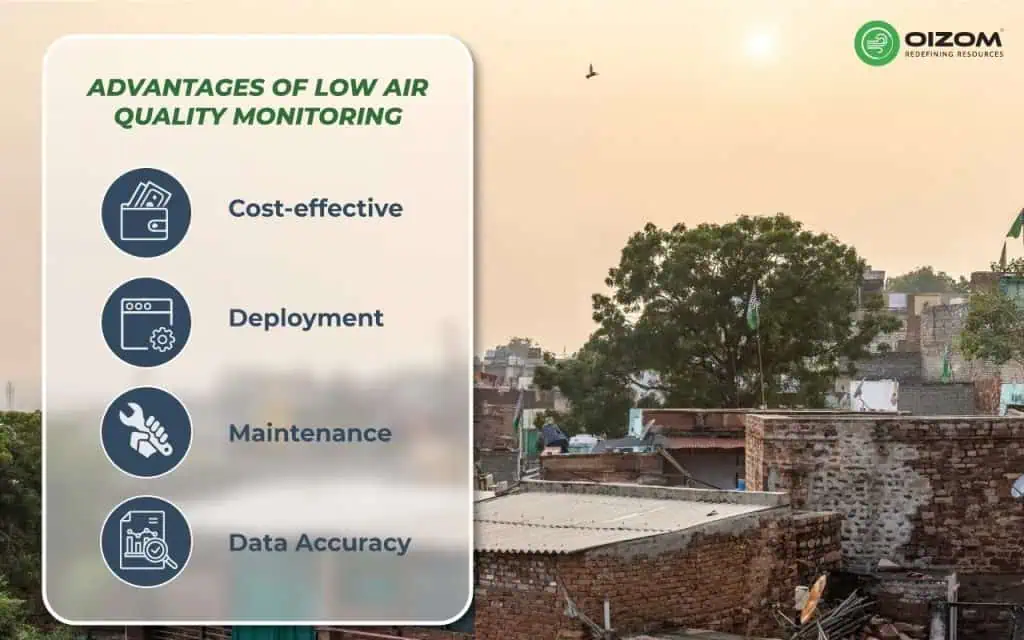
In India, there are around 7,000 rural blocks and 8,000 urban areas. Continuous government air quality monitoring (CAAQMS) uses regulatory-grade sensors to cover 330 locations in 171 cities/towns. There is practically no data for rural blocks; hence, today’s NCAP does not even include rural areas.
- Cost-effective – Low-cost sensors, on the other hand, are 40x cheaper than regulatory-grade sensors.
- Deployment – Low-cost sensors, including balconies and poles, may be installed in minutes anywhere.
- Maintenance – Low-cost sensors are easier to maintain and require 1-2 visits annually.
- Data Accuracy – The main advantage of low air quality sensors is that the data provided by the sensors are very accurate.
If you want an inexpensive yet accurate outdoor air quality monitor, the Oizom should be one of your first choices. This monitor comes with various customized parameters and provides real-time accurate data. Its robust and rugged design can withstand temperatures from -20℃ to +60℃. By understanding the importance of air quality monitoring and effectively implementing it, we can create a healthier, more productive workplace and a brighter future for all.
Conclusion
Finally, while low-cost sensors are affordable and easy to maintain and deploy, one of the main reasons for their adoption is the necessity of calibrating them against reference-grade monitors since I am an environmental engineer with broad experience in air quality research with sensor-based air monitors for measuring air quality.
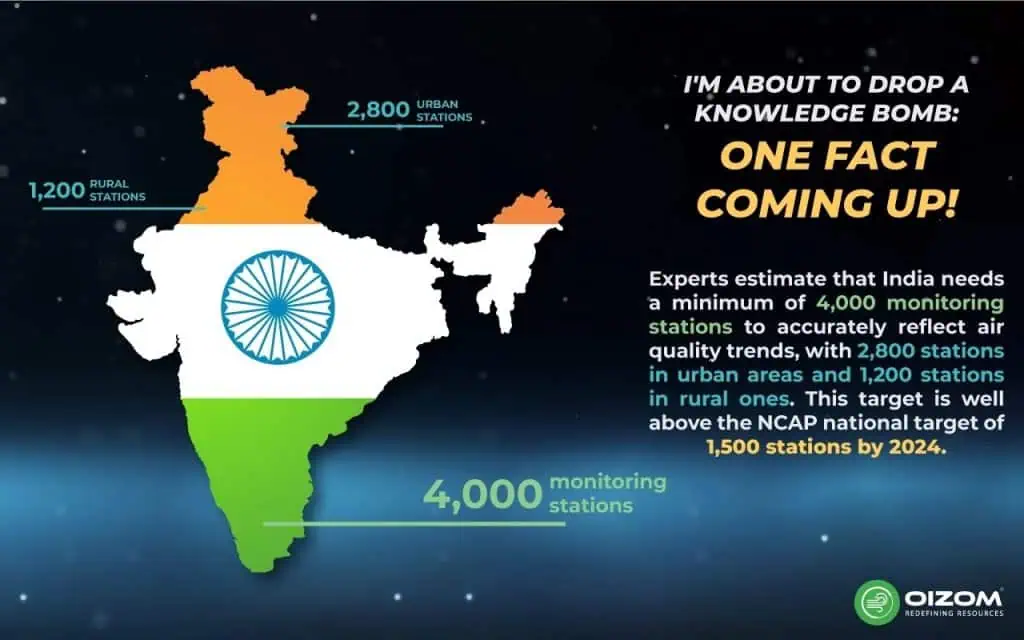
As a result, the solution to the air quality monitoring challenge is no longer low-cost sensors or regulatory-grade sensors but rather extremely low-cost sensors or hybrid networks. Oizom continues to innovate in this sector and advocates for low-cost air monitoring system nationwide.

